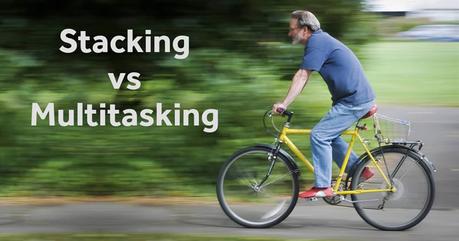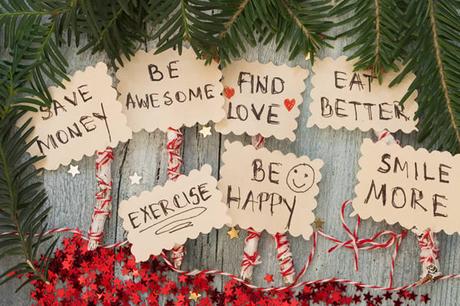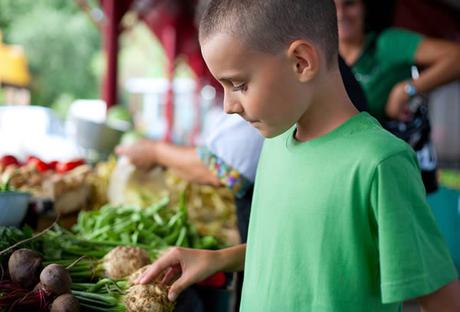
Happy New Year to our wonderful Softstar followers! Like so many of us are doing as we kick off 2018, you may be looking at your life and reflecting on what is and isn’t working for you, what habits you want to drop or adopt, and what you hope to accomplish in the year ahead.
Adding a bit of bah-humbug to our spirit of motivation, however, are the many news articles reminding us that new goals aren’t easy to keep. About 80 percent of New Year’s resolutions are kicked to the curb by February, according to statistics from U.S. News. But what if the problem isn’t us, our motivation level, or even the goals we’re choosing? What if the problem is the framework with which we think about goals and fitting them into our lives?
An out-of-the-box framework we love is the concept of “stacking” offered up by Katy Bowman, someone we’ve collaborated with over the years. For those of you who aren’t familiar with her work, Katy is an author and biomechanist who studies movement science and explores how movement can not only transform our own lives, but also our communities and the greater world around us. We highly recommend her book Movement Matters, which is where she presents her concept of stacking goals.
To explain stacking, Katy contrasts it with a concept we’re all familiar with: multitasking. In multitasking, we’re trying to do many things at one time (sometimes unrelated things). Stacking, on the other hand, is the concept of doing one thing that accomplishes many goals. In other words, the results we seek are layered—or stacked—in one single activity.
Because Katy’s field of study is movement, her concept of stacking focuses on incorporating movement into our lives. For instance, think about the difference between driving to run errands and then later driving to the gym (two activities with two results) versus walking or biking to run the errands (one activity with two results). In both cases, you’re moving your body and getting your errands done, but the approach is different. Part of adopting a new approach, Katy says, is taking a step back to reconsider concepts we take for granted, such as exercise.

Exercise vs. Movement-Minded Tasks
According to statistics compiled by Nielsen, more than half of all New Year’s resolutions relate to fitness and health. For many people, part of their strategy to tackle that goal is to start exercising or to exercise more. But Katy encourages us to consider the very definition of what “exercise” is in our culture, and to rethink the difference between exercise and living a life that is designed to be rich with everyday movement.
“Exercise” means time set aside specifically to move our bodies and use our muscles for the sake of fitness and health. It might mean an hour of time carved out in the morning to go to the gym, 30 minutes devoted to following an exercise video, or 20 minutes after work to go on a jog. While we might overlap this time spent with entertainment activities (like listening to a podcast while we’re working out), for the most part the time represents a part of our day that we are setting aside to move for the sake of moving. We’ve found it necessary to even have a concept like this in the industrialized world because our daily lives have become so sedentary, with so much time spent sitting in chairs and on couches.
Examples of Stacking
Let’s say these are four of your goals for the year ahead:
- Get more exercise
- Eat healthier
- Spend more time with my family
- Eat out less and cook more at home
In a traditional model of goal-setting, this might translate into you going to the gym five times a week; making weekly meal plans and more detailed grocery-shopping lists; planning different fun activities with your family every weekend; and maybe setting up some new traditions, like a family movie night. That’s just a start at a list of various activities you’d be trying to fit into your life to accomplish your goals.
In Katy’s model of stacking, you might instead think very intentionally about how you could change something in your routine to accomplish all of these at once. For instance, what if you decided that twice a week, you would take a family bike ride to the farmers’ market or your favorite fresh-foods market to shop together for groceries, including plenty or local fruits and vegetables. You’d be moving, hanging out with your family, and setting the stage for lots of healthy meals at home.

Other activities could stack all these goals, too, such as wild food foraging as a family or going berry picking together.
As another example, let’s look at just two common goals together and think of possibilities for stacking them: saving money and exercising more. You might:
- Grow a vegetable garden (moving your body and saving money on your grocery bill)
- Chop your own firewood and build fires in your woodstove for home heating (moving your body and saving money on your heating bill)
- Start commuting to work and running your errands by bike (moving your body and saving money on gas and transportation costs)
- Hanging your clothes on a clothesline instead of using the dryer (even seemingly mild forms of movement add up throughout a day, and this saves electricity)
The opportunities for stacking these tasks really stack up when you start brainstorming! Plus, an important benefit you may notice from the list above is that all of these ideas are better for the planet, too. Katy suggests that the key to adopting this framework is to think very intentionally about every activity you embark on in a day, what your needs actually are in your day-to-day life, and how an activity can serve multiple functions.
Do you have any ideas for stacking to help you accomplish your goals in 2018? We’d love to hear about them in the comments section! We wish you all the best in creating a year full of movement and fulfillment.
Relates Posts:
- Celebrating Movement with Katy Bowman
- Katy Bowman Shares Her Family's Outdoor School Experiences
- Katy Bowman Teams Up with Softstar for Movement Retreat

